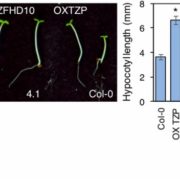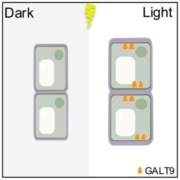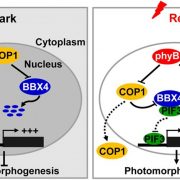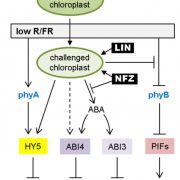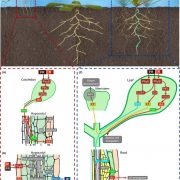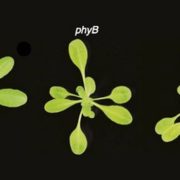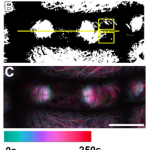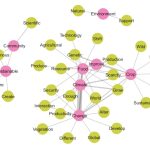Unlocking the secrets of light signaling in Physcomitrium
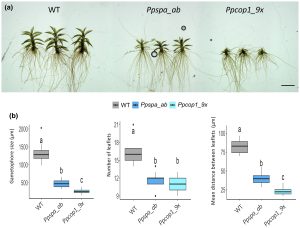 The water-to-land transition increased plant complexity, requiring endogenous developmental programs to be linked to light signal transduction pathways to adapt to ambient light. Arabidopsis COP1 (CONSTITUTIVE PHOTOMORPHOGENIC 1) and SPA (SUPRESSOR OF PHYA-105) proteins represses photomorphogenesis under darkness. SPA genes are green lineage-specific, while COP1 is ancient and found in mammals. Mammalian COP1 functions without SPA auxiliary proteins. When did COP1 and SPA co-action evolved? To answer this question, the researchers generated Ppcop1 mutants and compared with the Ppspa in the moss Physcomitrium patens. Their results show that Ppcop1 and Ppspa show resemblance in their phenotypes- both produce green chloroplasts in complete darkness. They also exhibited disturbed branching of protonema and loss of gravitropism. In addition, they found that the PpCOP1 and PpSPA interacted with cryptochrome in blue light which is similar to the interaction of Arabidopsis SPA with CRY1. When compared to their Arabidopsis homologs, the COP1 and SPA proteins in Physcomitrium display partial inhibition of light signaling under darkness which suggests that additional proteins may exist which contribute to completely repressing the light signaling in darkness. (Summary by Arpita Yadav @arpita_yadav_). Plant J. 10.1111/tpj.16128
The water-to-land transition increased plant complexity, requiring endogenous developmental programs to be linked to light signal transduction pathways to adapt to ambient light. Arabidopsis COP1 (CONSTITUTIVE PHOTOMORPHOGENIC 1) and SPA (SUPRESSOR OF PHYA-105) proteins represses photomorphogenesis under darkness. SPA genes are green lineage-specific, while COP1 is ancient and found in mammals. Mammalian COP1 functions without SPA auxiliary proteins. When did COP1 and SPA co-action evolved? To answer this question, the researchers generated Ppcop1 mutants and compared with the Ppspa in the moss Physcomitrium patens. Their results show that Ppcop1 and Ppspa show resemblance in their phenotypes- both produce green chloroplasts in complete darkness. They also exhibited disturbed branching of protonema and loss of gravitropism. In addition, they found that the PpCOP1 and PpSPA interacted with cryptochrome in blue light which is similar to the interaction of Arabidopsis SPA with CRY1. When compared to their Arabidopsis homologs, the COP1 and SPA proteins in Physcomitrium display partial inhibition of light signaling under darkness which suggests that additional proteins may exist which contribute to completely repressing the light signaling in darkness. (Summary by Arpita Yadav @arpita_yadav_). Plant J. 10.1111/tpj.16128


